There are 53 UNESCO World Heritage Sites in France, which means that this beautiful country is a UNESCO enthusiast’s heaven.
UNESCO selects properties for their cultural, historical, natural, or scientific significance. Forty-four of the UNESCO World Heritage Sites in France are cultural sites, seven are natural, and two are mixed. France also has 33 sites on UNESCO’s Tentative List.
Falling fourth in line on the list of countries with the highest number of UNESCO World Heritage Sites, behind Italy, China, and Germany, France is dotted with UNESCO-listed wonders throughout all its regions.
It’s easy to slide at least one French World Heritage Site onto your agenda. Yet, devising a bespoke UNESCO itinerary is a true tour de force and JayWay Travel can be your best friend in this endeavor.
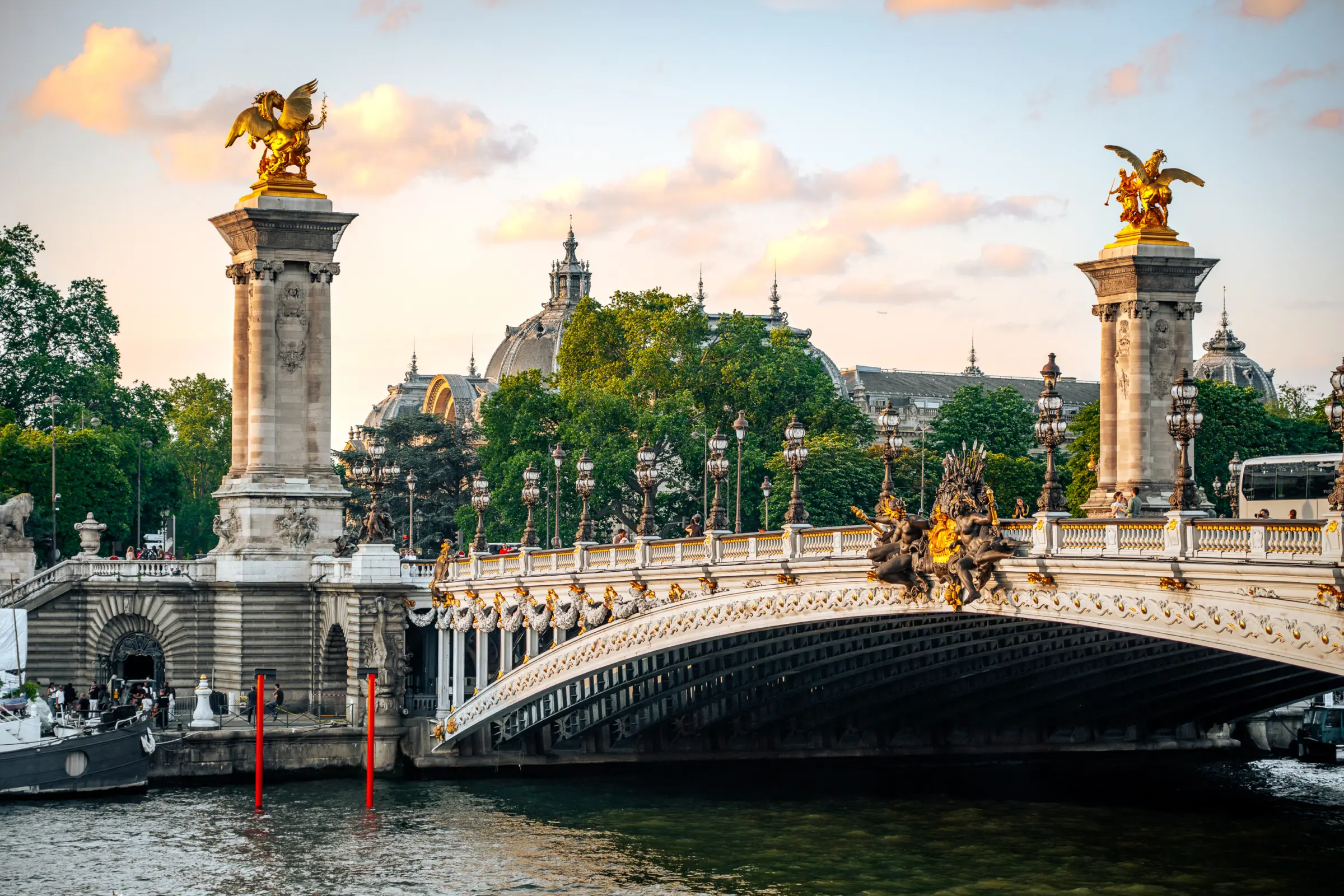
Jump to a section of this article
15 UNESCO World Heritage Sites in France To Visit on Your Next Trip
1. Mont-Saint-Michel & Its Bay
One of the oldest-inscribed UNESCO World Heritage Sites in France is also the most breathtaking. Among the prettiest places to visit in France, Mont-Saint-Michel is a tidal island, Benedictine abbey, and fortified village situated a little under a mile off the Normandy coast.
The coexistence of a natural phenomenon, pilgrimage center, and settlement contributed to the inclusion of Mont-Saint-Michel and its bay on the UNESCO World Heritage List.
The architects behind the Romanesque-Gothic abbey blended science and art to address the unique topography of the island. Stones were laid on top of an existing sanctuary dedicated to the Archangel Michael, and workers devoted 600 years to building a structure able to withstand the elements.
When the tide is out, the bay stuns with its mudflats. This UNESCO site is especially attractive during spring when the torrents are at their greatest.
Straddling the border between Normandy and Brittany, Mont-Saint-Michel is a popular day trip from the seaside resort of Saint-Malo. The village is free to explore. Yet, the abbey requires an advance ticket to avoid long lines. But fear not; JayWay Travel will add the best guided tour of Mont-Saint-Michel to your France itinerary.
Date of inscription: 1979
Region: Normandy

2. Paris, Banks of The Seine
Had the marvels of Paris been added individually, France would see its UNESCO count edging towards triple figures. Instead, the Cultural Heritage Site of Paris, Banks of the Seine, incorporates 531 hectares of riverside landmarks between the Eiffel Tower and the Ile de la Cite.
The area includes the Louvre, Eiffel Tower, Notre-Dame Cathedral, Place de la Concorde, Grand Palais, Petit Palais, Pont Alexandre III, Champs de Mars, and Hotel des Invalides.
The boundary extends to Georges-Eugene Haussmann’s introduction of urban squares and wide boulevards. These set the blueprint for town planning in European cities and beyond.
The Banks of the Seine is an open-air museum testifying to the architectural development of Paris, particularly during the 19th and 20th centuries. This riverside segment is a joy to explore independently or through historian-led walking tours.
Date of inscription: 1991
Region: Ile-de-France
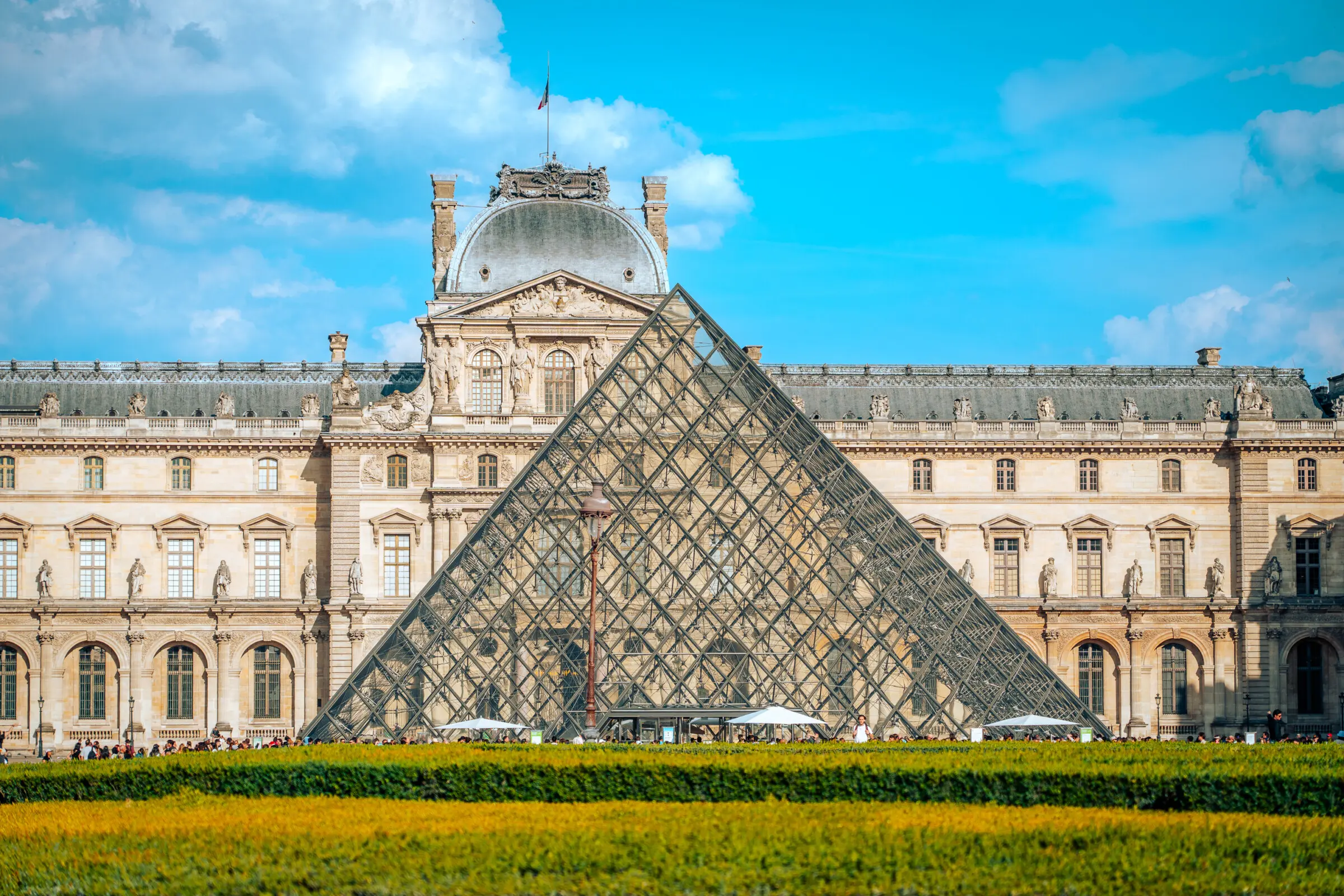
3. Champagne Hillsides, Houses & Cellars
Wine has been around for centuries but its bubbly cousin didn’t enter the mainstream until the 19th century. The process of fermenting effervescent wine started two centuries earlier and the monk Dom Perignon is attributed with ironing out the initial kinks.
However, it’s the winemakers that came after coupled with the chalky highlands of northeast France that take the credit for Champagne’s success.
The UNESCO-protected Champagne Hillsides, Houses and Cellars encompasses three principal sites: the vineyards of Hautvillers, Ay, and Mareuil-sur-Ay, Saint-Nicaise Hill in Reims, and the city of Epernay.
Fort Chabrol and prestigious Champagne houses flanking Avenue de Champagne sit atop a network of chalk cellars deep beneath the streets of Epernay.
One of the best UNESCO World Heritage Sites in France for oenophiles works as a day trip from Paris. Champagne tours included in your Best of France itinerary typically mix a vineyard visit and a Champagne house.
Date of inscription: 2015
Region: Grand Est
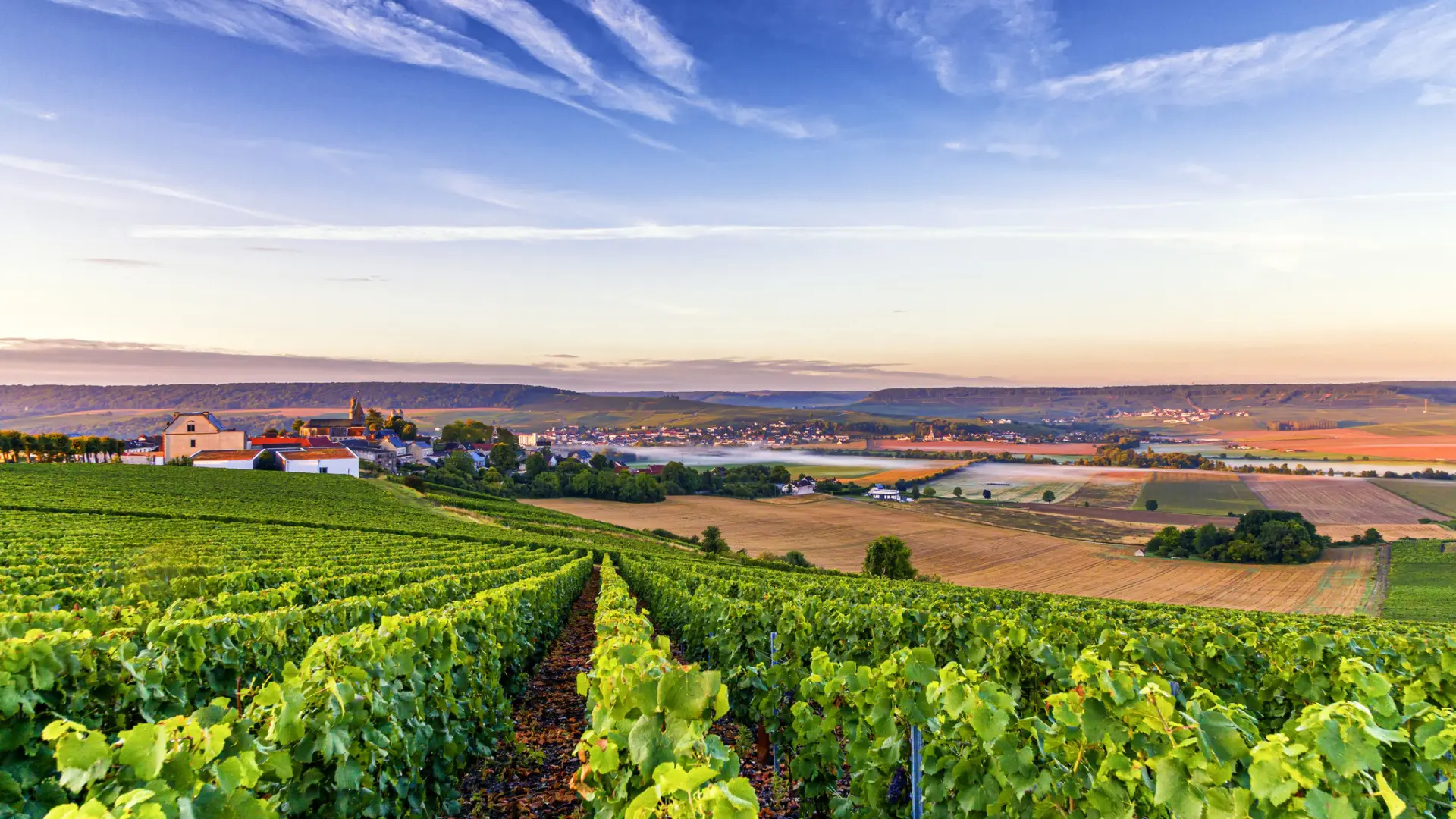
4. Historic Fortified City of Carcassonne
The Romans paved the way for one of the most incredible medieval UNESCO World Heritage Sites in France. As it stands today, the Historic Fortified City of Carcassonne exemplifies an impregnable defensive system guarded by 52 towers dating predominantly to the 13th century.
Chateau Comtal and the Basilica of Saints Nazarius and Celsus claim the heart of the labyrinthine fortification. The castle exhibits archaeological treasures and chronicles the feats of the double-walled fort while the church sports one of France’s oldest stained-glass windows.
Ramparts overlook the modern Lower City, Aude River, and surrounding vineyards but you’ll want to take in a view of the stronghold from afar, too. Viewpoints southeast of the citadel grant a remarkable silhouette that pops at sunset.
You’ll need at least half a day exploring the battlements and streets of Carcassone. Therefore, it’s best to add Carcassone to your France itinerary as an overnight stop. This will allow you enough time for a boat ride on another local UNESCO-inscribed attraction: Le Canal du Midi.
Date of inscription: 1997
Region: Occitania
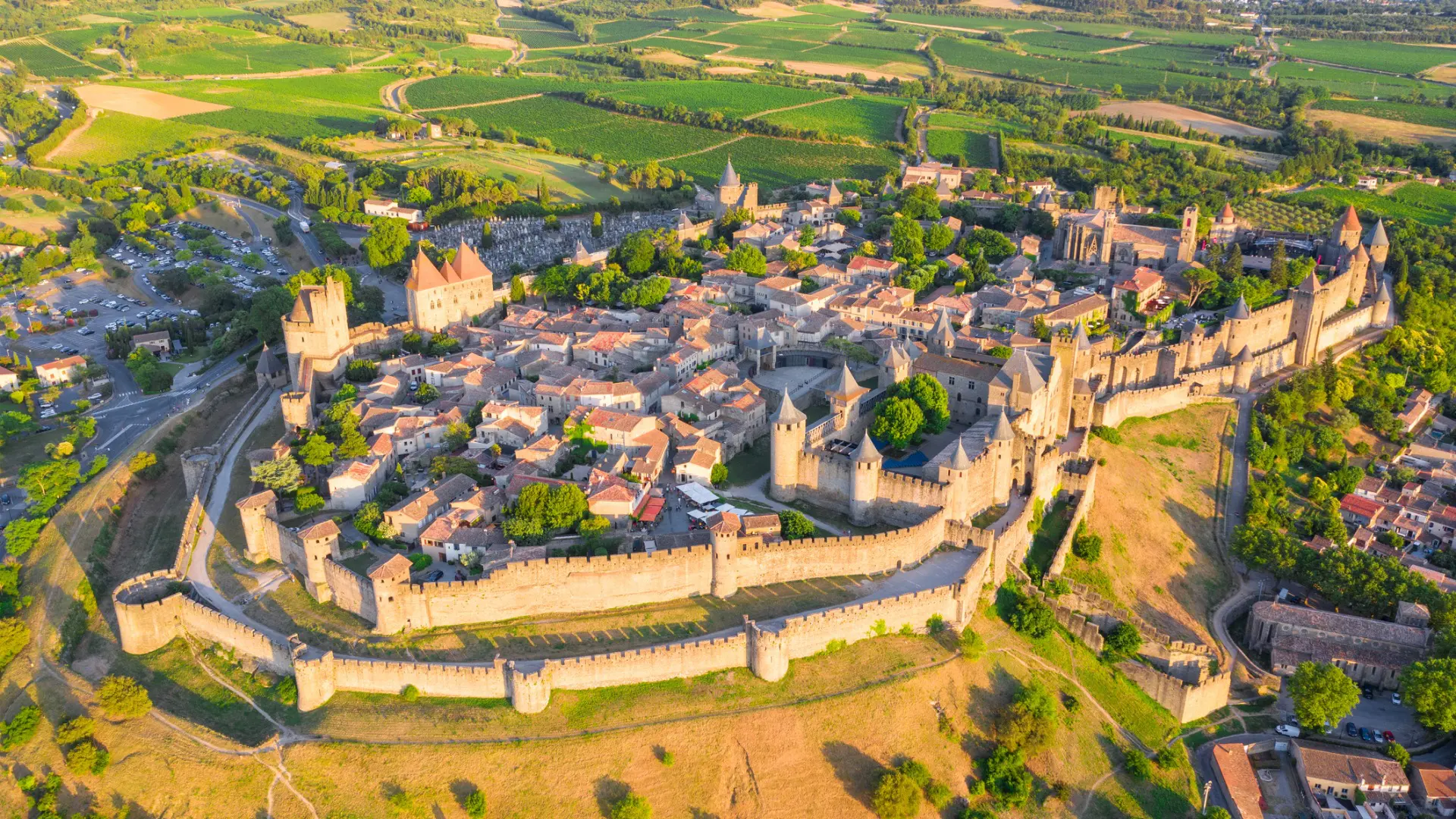
5. Bordeaux, Port of The Moon
Bordeaux is synonymous with Merlot and Cabernet Sauvignon. However, there’s much more to this port city than its vineyards, as made clear by UNESCO designating the entire city as a World Heritage Site.
Starting with the architecture, Bordeaux preserves 347 protected buildings. As many of these churches, mansions, historic monuments, and plazas were assembled during the Age of Enlightenment, they are a golden example of coherent urban planning and an important part of the country’s architectural heritage.
Bordeaux, Port of the Moon, was so named for the distinct shape the Garonne River makes as it journeys between the city center and the harbor. This major port put Bordeaux on the map around 300 BC and went on to be a nucleus for the coffee, cocoa, sugar, cotton, and indigo trade.
Combining the strategic urban core, its commercial prowess, and its ability to move with the times contributed to Bordeaux earning heritage status. As with Paris, the landmarks may be explored as part of an independent walking trail or in the footsteps of a local guide.
Date of inscription: 2007
Region: Nouvelle-Aquitaine
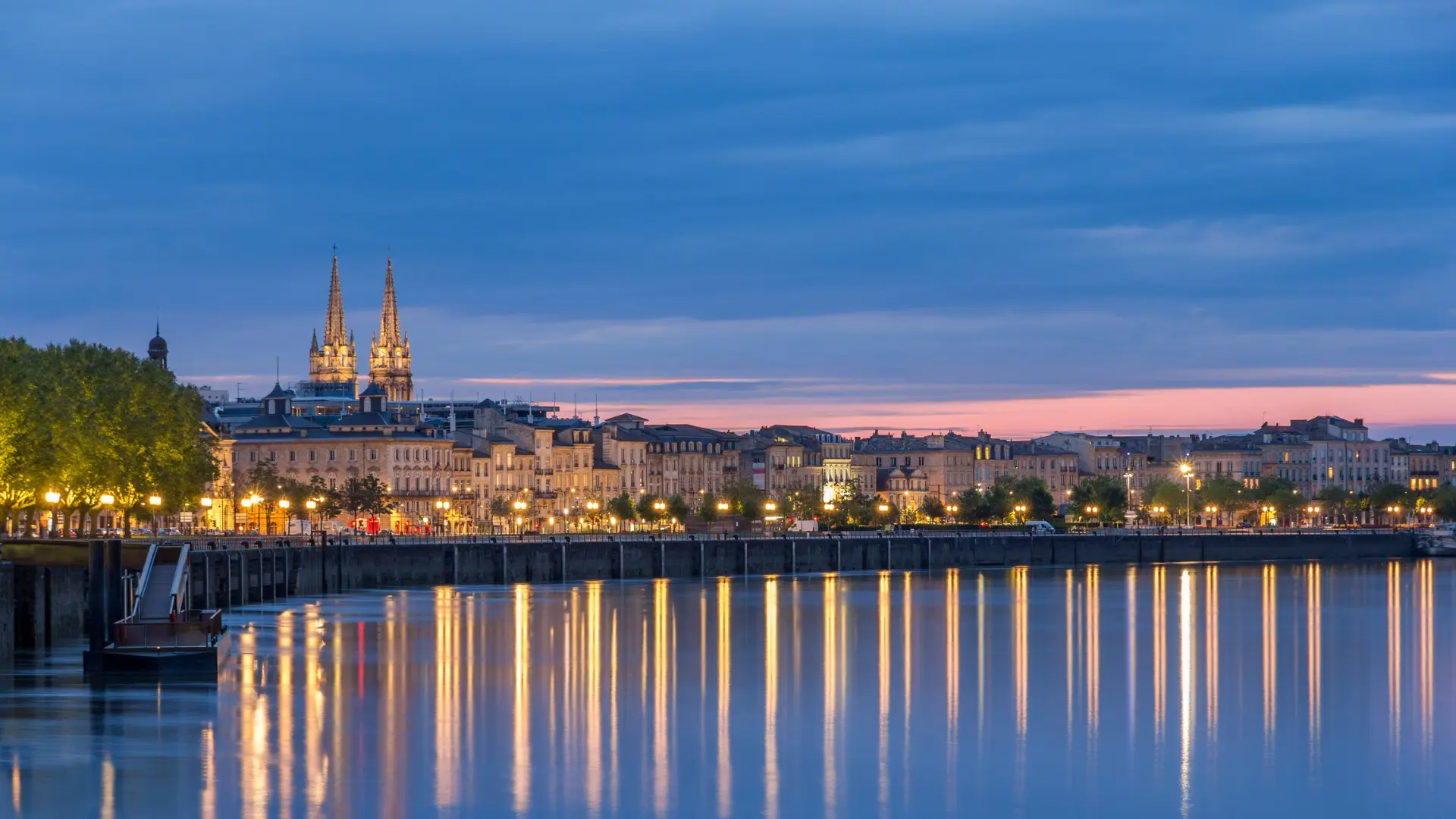
6. Loire Valley Between Sully-sur-Loire & Chalonnes
This enchanting World Heritage Site celebrates the idyllic landscapes and architectural triumphs of rural France. The Loire Valley encompasses the chateaux, agricultural land, and villages between Sully-sur-Loire in the east and Chalonnes in the west.
Centuries-old interactions between the Loire River – France’s longest river – and its bankside settlements contributed to the inscription of this cultural site on the list of UNESCO World Heritage Sites in France.
Originally inscribed as an individual landmark, the Renaissance Chateau de Chambord is the highlight of the so-called Garden of France. The largest castle in the Loire Valley is joined by Chateau de Chenonceau, Chateau de Blois, and the Royal Abbey of Fontevraud as notable structures in this sea of ancient vineyards.
Besides being one of the best UNESCO World Heritage Sites in France for castle sightseeing, the Loire Valley is awash with dreamy medieval villages. Blois, Chinon, Orleans, Saumur, and Amboise are just some of the riverside townships to explore by boat, bike, or on foot.
As a bonus, the culinary scene in the Loire Valley is second to none, with exceptional cheeses. For all this, the Loire Valley deserves to be added as a stop on your next France vacation.
Date of inscription: 2000
Region: Pays de la Loire/Centre-Val de Loire
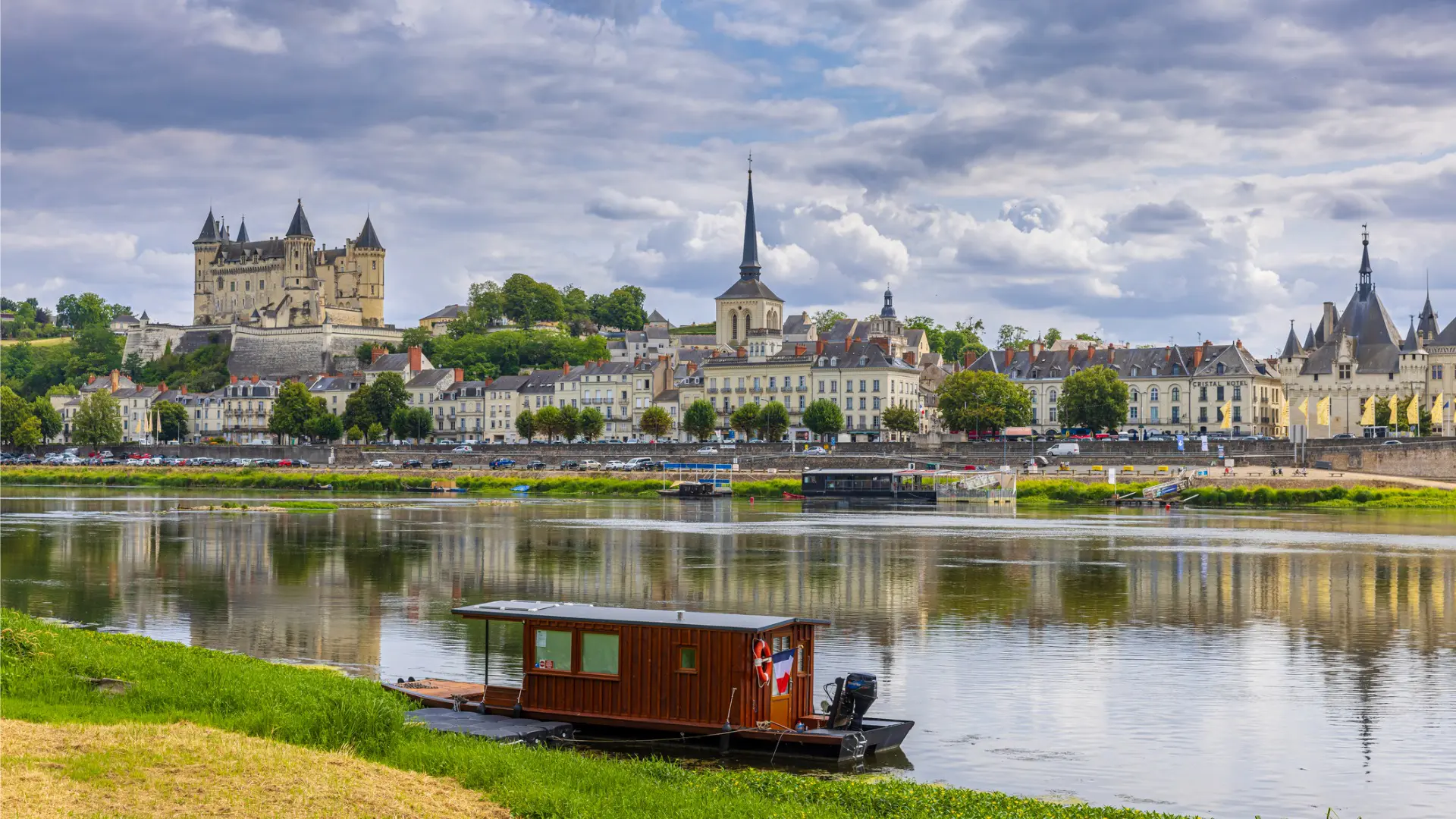
7. Nice, Winter Resort Town of The French Riviera
Despite being one of the youngest UNESCO World Heritage Sites in France, the evolution of Nice as the quintessential seaside resort traces back to the 18th century.
The French Riviera city caught the particular interest of wealthy British holidaymakers seeking a respite from harsh winters. Families would stroll the seafront – later immortalized as the Promenade des Anglais – and elaborate gardens were planted to accentuate the natural beauty.
Tucked between the foothills of the Alps and the Mediterranean Sea, Nice’s mild climate was associated with health benefits.
After the aristocrats, came the artists – Henri Matisse among them – and architects eager to make their mark. In addition to its joie de vivre lifestyle, Nice, Winter Resort Town of the Riviera, showcases fashionable architectural trends over the past three centuries.
The Belle-Epoque Beaux-Arts Museum and Neoclassical Villa Massena flank the promenade whereas Art Deco and Baroque facades rub shoulders in Old Nice.
As the name hints, winter is prime time for visiting the sunny Cote d’Azur capital in the south of France. In reality, it’s equally pleasant during spring and fall and the perfect base to explore the magic of the French Riviera any time of the year.
Date of inscription: 2021
Region: Provence-Alpes-Cote d’Azur

8. Palace & Park of Versailles
Custom-built for monarchs, the Palace and Park of Versailles is the epitome of a royal residence. Since its completion, countless replicas have sprung up throughout Europe, while the gardens have inspired horticulturists.
Work on repurposing King Louis XIII’s hunting lodge began at the bequest of his successor, Louis XIV. The baton was then passed to Louis XV and Louis XVI respectively to continue the visual catalogue of French design.
Apart from the magnificent interiors and landscaped gardens full of topiary and water features, the Palace of Versailles was a hub for performance arts, scientific dialogues, ceremonies, and state affairs.
Located 11 miles southwest of the capital, the estate is one of JayWay’s must-do day trips from Paris. Marie Antoinette’s private chambers, the Hall of Mirrors, the Coronation Room, and the Gallery of Great Battles are just some of the 2,300 rooms at what was briefly the de facto capital of France.
Date of inscription: 1979
Region: Ile-de-France
9. Strasbourg, Grande-Ile & Neustadt
The border city of Strasbourg predates Bordeaux and Nice as the first instance where an entire urban area received World Heritage credentials. That’s not just France, but globally. Strasbourg, Grande-Ile, and Neustadt refer to the historical center, the German Quarter, and an island bounded by waterways.
There’s nowhere in France like Strasbourg. The historic region of Alsace was torn between French and German rulership following the siege of 1870 before the countries reached an agreement, and Strasbourg became the official seat of the European Parliament as a sign of unity.
Structured around the Gothic and Romanesque-inspired cathedral, Grande-Ile is the touristic heart of Strasbourg, where you’ll encounter half-timbered buildings strung with blooms and the quaint streets of Petite France. Idle into Neustadt, and you’re in imperial Germany.
What UNESCO forgot to mention is the food. Just as the city synthesizes the Rhineland Renaissance and classic French architecture, Alsatian cuisine melds both countries. Strasbourg’s winstubs typically dish up German dishes with a French twist alongside wines of Alsace.
An itinerary that combines France and Germany is the best way to appreciate this unique blend of cultures.
Date of inscription: 1988
Region: Grand Est
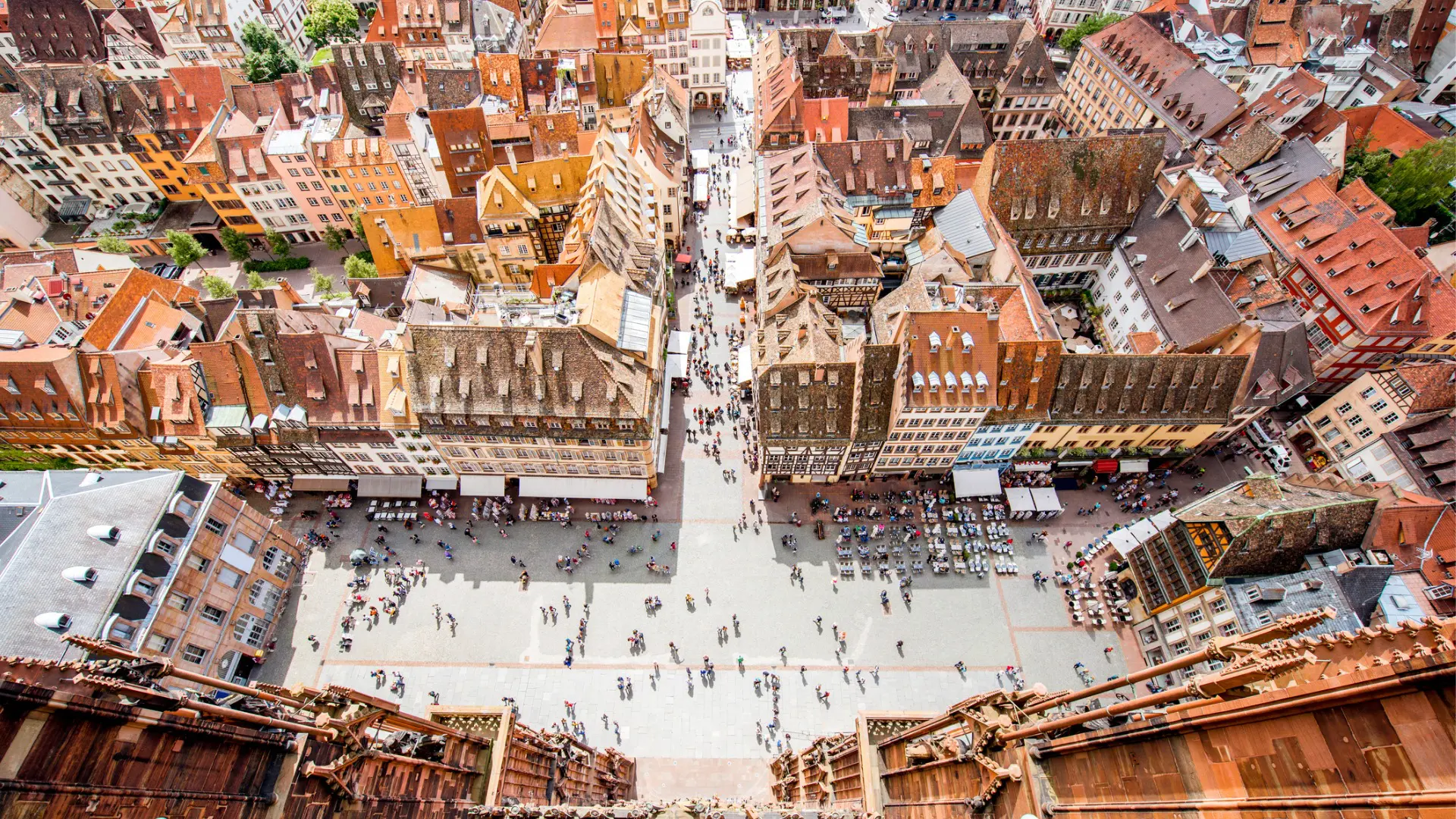
10. Pont du Gard (Roman Aqueduct)
Constructed in the 1st century AD to facilitate the water supply for the city of Nimes, Pont du Gard is one of the world’s best-preserved Roman aqueducts.
Standing almost 50 meters high and built on three levels, Pont du Gard earned its place on UNESCO’s list of World Heritage Sites for being not only an engineering wonder of its time but also a masterpiece of art. For the same reasons, Pont du Gard has been attracting tourists and intellectuals for centuries.
Pont du Gard is a mere 30-minute drive from Avignon, one of the prettiest towns to use as a base in the enchanting region of Provence.
Date of inscription: 1985
Region: Occitania
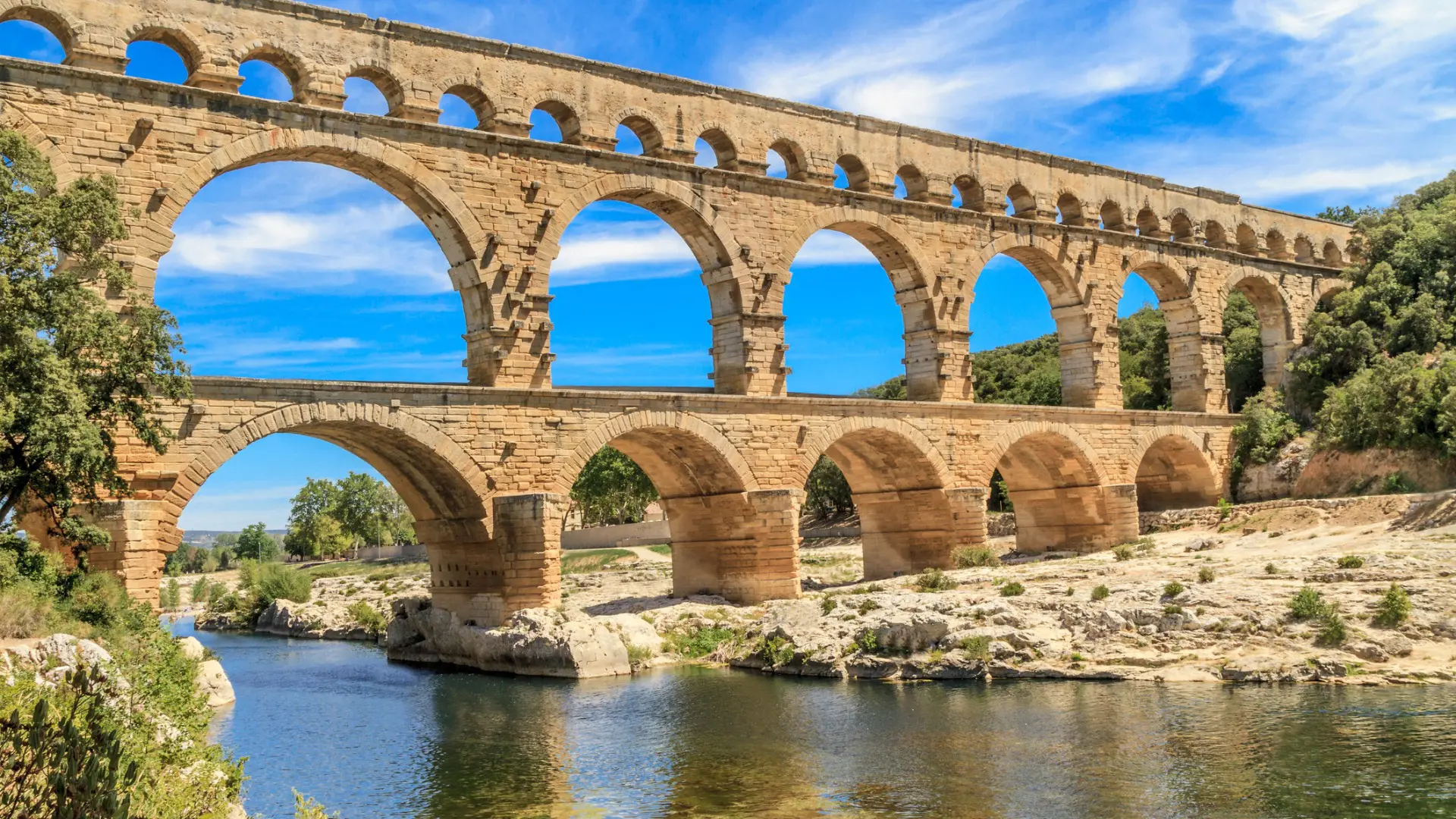
11. Vezelay, Church & Hill
One of the oldest UNESCO World Heritage Sites in France, Vezelay, Church and Hill refers to a Romanesque monastic church that became an important place of pilgrimage. The 9th-century abbey grew into a popular destination for spirituality in the 12th century when the church was consecrated to Mary Magdalene.
Pilgrims making their way along the routes of Santiago de Compostela in Spain would pass Vezelay, stopping to worship at the site housing relics belonging to Mary Magdalene. The basilica is the pinnacle of Burgundian Romanesque art with decorated archways and a porch depicting the Mission of The Apostles.
Known as the Eternal Hill, the mound on which the abbey rests is visible from the town center and surrounding pastures that haven’t changed since the Middle Ages. It bridges the gap between the Burgundy and Loire Valley regions of France.
Vezelay lies a little over two hours and a half from Paris and a three-hour drive from Lyon or Amboise and it can be arranged as a day trip from any of the three.
Date of inscription: 1979
Region: Burgundy
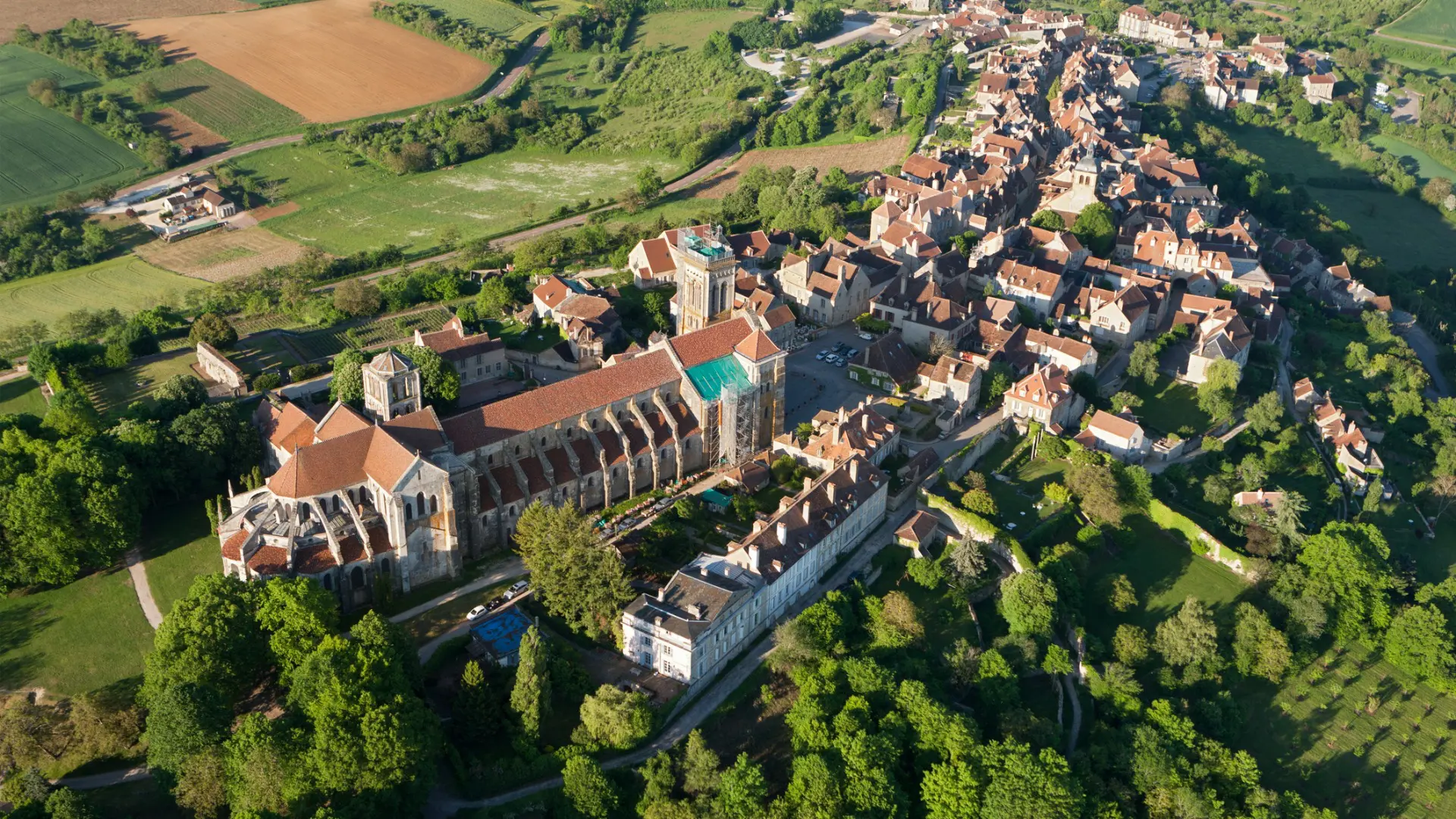
12. Funerary & Memory Sites of The First World War
The most recently inscribed World Heritage Site in France is one of the most poignant. The Funerary and Memory Sites of the First World War incorporate 139 graves and memorials on the Western Front.
This 400-mile stretch along the French border staged major and prolonged offensives amounting to the loss of up to five million soldiers. These include the 1915 Battle of Ypres and the 1916 Battle of the Somme, the latter of which saw over one million casualties.
Among the UNESCO-protected tributes stands the Thiepval Memorial, dedicated to 72,000 casualties. You can visit it on a day trip from Paris as the drive takes a little over two hours.
The Douaumont Ossuary contains the bones of a further 130,000 unidentified soldiers lost at the Battle of Verdun. The Ossuary can also be visited from Luxembourg as it’s only a one and a half hour’s drive from the monument to the tiny nation’s capital, Luxembourg City.
This Transnational World Heritage site in Belgium and France commemorates the lives lost and symbolizes peace.
Date of inscription: 2023
Region: Hauts-de-France/Grand Est/Ile-de-France
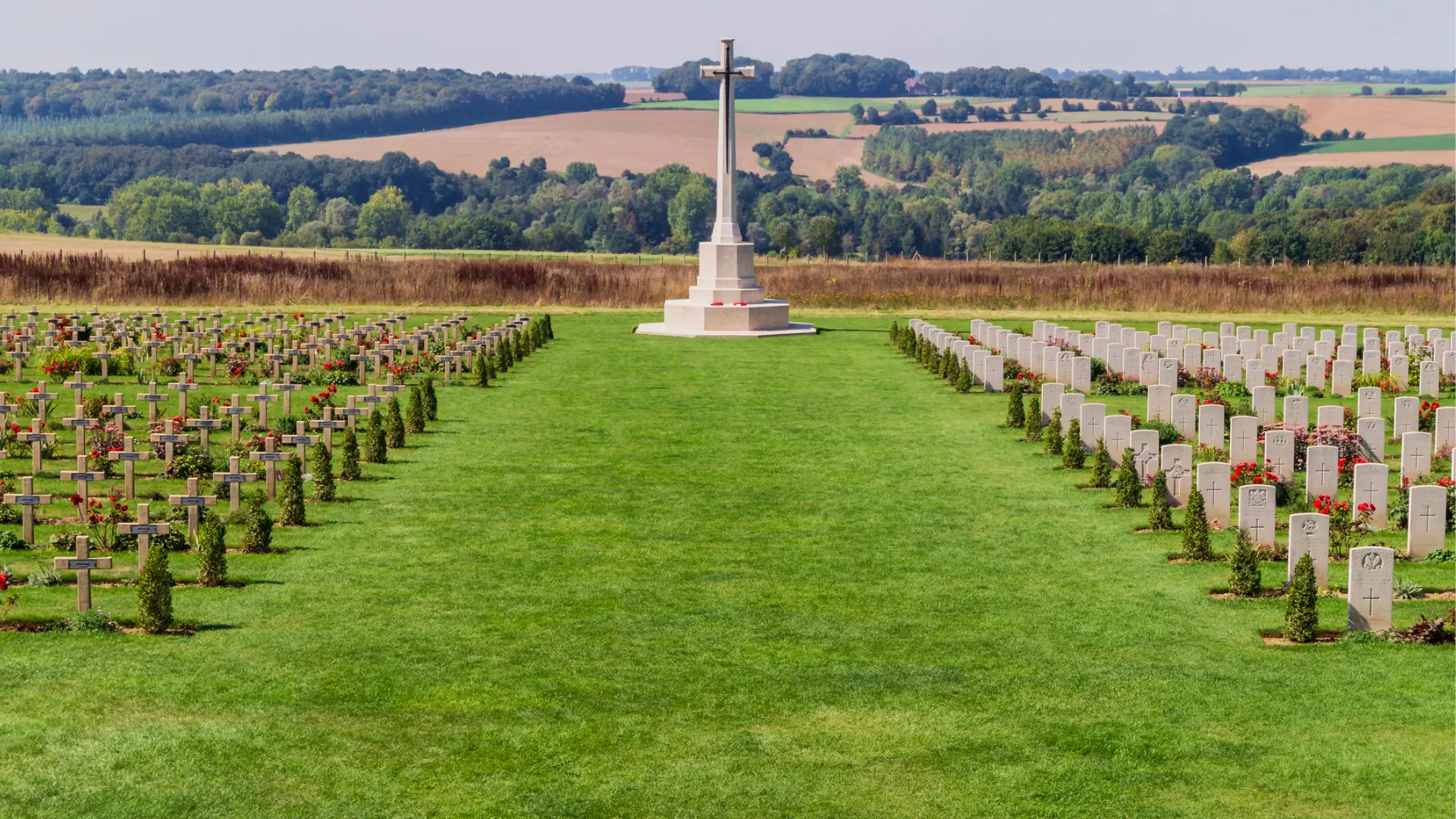
13. Cordouan Lighthouse
The Cordouan Lighthouse rises precariously at the point where the Gironde spills into the Atlantic.
Its foundations were laid by Louis de Foix in 1584 who plucked inspiration from Roman mausoleums and Renaissance palaces. The grandiose design was to meet Henri III’s demands for kingly living quarters; an apartment was installed on the second floor and a chapel above.
Joseph Teulere remodeled the lighthouse towards the end of the 18th century. Reacting to feedback from sailors, he increased the tower’s height to boost visibility without disturbing the monumental embellishments.
At the same time, the so-called Versailles of the Seas debuted a groundbreaking rotating lens created by Augustin Fresnel that transformed maritime safety.
Not only is the Cordouan Lighthouse one of the most beautiful UNESCO World Heritage Sites in France, it serves a purpose. The tower has been in continuous use since its first lighting and operates as a traditional lighthouse with a resident keeper. The lighthouse may be visited by boat from Bordeaux.
Date of inscription: 2021
Region: Nouvelle-Aquitaine
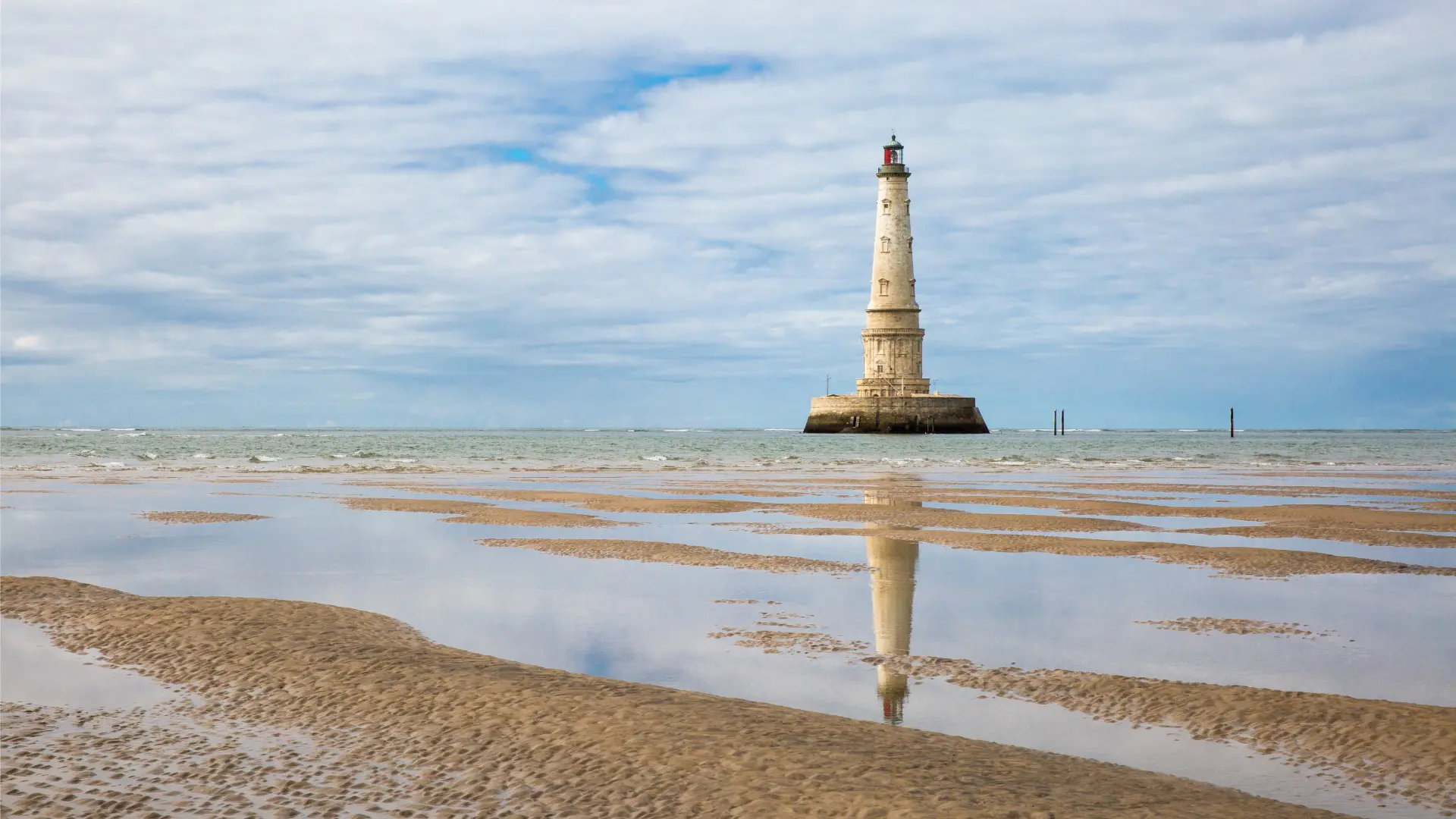
14. Vichy, one of The Great Spa Towns of Europe
Marking the geographical center of France, Vichy is one component of a transnational serial property. Eleven towns in seven European countries bear witness to the development of spa culture on the continent.
Balneology dates far back to antiquity. However, from the 18th century onwards, the motion of “taking the cure” was established as a means of using thermal waters to tend to ailments while engaging in leisure pursuits in elegant surroundings.
These activities might include the arts, dancing, restorative walking, and even gambling, as proven by Vichy’s casino.
The springs flowing through Vichy spout from the dormant volcanoes of Auvergne in the Massif Central. This area forms one of France’s natural UNESCO World Heritage Sites – the Chaine des Puys Tectonic Arena.
Napoleon Bonaparte was a regular at Vichy whose influence established the town as a fashionable Belle Epoque wellness destination. Six springs stud Vichy, the most famous being Source Celestine where you can fill your bottle with naturally sparkling mineral waters.
Vichy is a two-hour drive from Lyon. As such, it’s a fairly easy day trip from the latter.
Date of inscription: 2021
Region: Burgundy

15. Gastronomic Meal of The French
Rounding off with a wildcard, the Gastronomic Meal of The French is an integral part of modern culture. In fact, France was the first country to be singled out for its gastronomy on UNESCO’s List of Intangible Cultural Heritage of Humanity.
French cuisine is up there with the chateaux as a raison d’etre among travelers. The Gastronomic Meal of The French outlines an experience where at least four of seven courses are consumed between an aperitif and a digestif. Special attention is paid to balancing the flavors and wine is paired appropriately.
Above all, UNESCO’s designation highlights the significance of French dining rituals. Families gather at the table to celebrate important events but the act of sharing food – and passing down traditional recipes – is part and parcel of the lifestyle. So there you have it: ordering dessert is one authentic way to immerse yourself in the culture of France.
Date of inscription: 2010

Visit The Best UNESCO World Heritage Sites in France With JayWay
At JayWay Travel, there’s nothing we love more than to craft bespoke, themed itineraries tailored to your needs, preferences, and dream destinations. If you’re visiting France soon, our expert trip planners are the best people to come up with a customized itinerary across several of the UNESCO World Heritage Sites in France featured in this article. All you have to do is reach out to us with your dates, and we’ll take it from there.

Born and raised in Athens, Maria’s passionate about travel and storytelling, a combination that makes her ideal for her role as our content manager.